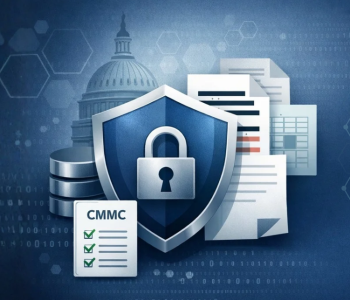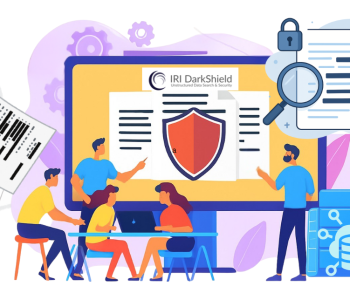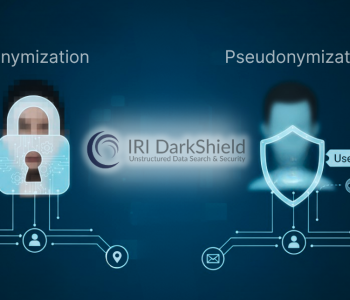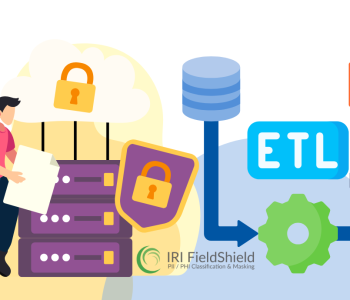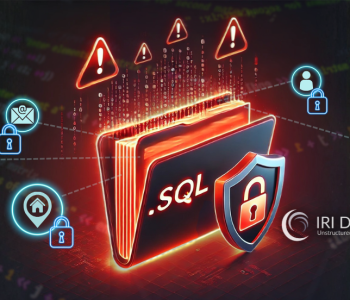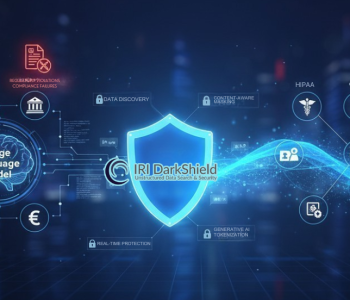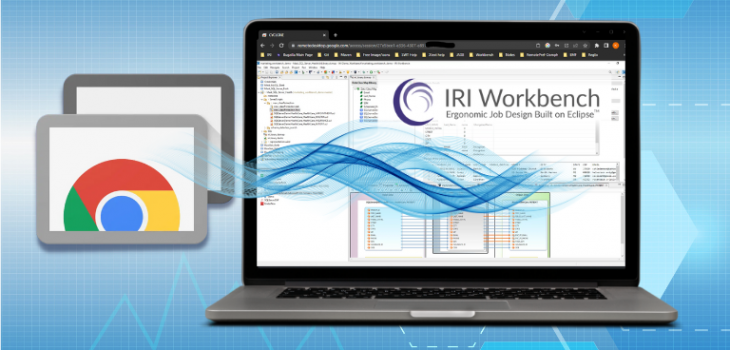
Running IRI Software in a Browser: Chrome Remote Desktop
Abstract: This article demonstrates the use of the Chrome Remote Desktop (RDP) extension from Google to run IRI Workbench and its SortCL-powered mapping, masking, and munging jobs remotely from a browser. While not a true web application, the IRI Workbench GUI, built on Eclipse, can run as authorized from anywhere using this or similar RDP/RDS or VNC methods.
Introduction
The Remote Desktop Protocol (RDP) implementation in Google Chrome delivers access to Mac, Windows, or Linux computers running on-premise or in the cloud over the internet, and thus also a way to design and run IRI Voracity software from IRI Workbench remotely. By providing remote access in this way, Workbench users can create, modify, share, and run their data management jobs from the convenience of a browser and with the power of Eclipse, but without the security concerns associated with software vendor-managed infrastructure.
Requirements
There are two ways to set up RDP: the first option is to use Google Chrome web browser and download an extension on the remote computer. The second option is to use SSH. With SSH there is no need to download an extension; all you need to do is download a file and run a console command.
For both options, the Google Chrome browser is needed on your local computer (the computer that will be connecting to the other computers). You can download Chrome from here.
Before we start, It is important to understand what Google accounts/profiles are and how they work. Profiles allow you to tailor (custom-configure) your browser based on how you use it.
For example, you can have a work profile and a personal profile that will be different from one another. When setting up remote access through Chrome, the connection will only be available to the Google profile that was used to set up the remote access.
Therefore, if I use my work profile to create a remote connection to a computer at the office, that connection will only appear in my work profile and not in.
Setting up Remote Access with a Browser Extension
For the first option, in the address bar on the remote computer, enter remotedesktop.google.com/access to set up computers to use Chrome RDP and initiate remote access services.

In the middle of the screen, you will see Setup remote access with a download icon below. Click on the download button and the Chrome web store will open allowing you to download the Chrome Remote Desktop extension. Click on Add to Chrome and it will download the extension.
Once the extension is installed, it will send you back to the Chrome Remote Desktop web

page and it will ask you to give a name to the computer. It will also prompt you to give a pin that will act as a password in order to access this computer.

Now that the connection is all set, we can remotely connect to this computer and access any files or applications it has.
Remote Connection Using SSH
There are several ways to set up remote access using SSH. The simple way is to have Google Chrome on the remote computer. Go to the same Chrome RDP URL and select Set up via SSH.

Click on Begin to download the Chrome Remote Desktop file. There are two files: one for Windows and another for Linux. Select the file appropriate for your computer.

Once you have selected the file and it is finished downloading, the next step is to authorize the computer for remote access. Click the Authorize button:

Next, you will need to run a command to execute the file that was downloaded earlier. Google has the command ready to be copied-and-pasted depending on the terminal that you are using.

Once you have pasted the command and hit enter, another terminal window will appear asking you to enter a PIN number at least six digits long. This will act as the password to connect to this computer remotely. Once that is done, the computer will be available for Chrome RDP the device will have the same name as the hostname of the remote computer.
Connecting from another Computer
To use Chrome RDP, ensure that the local computer is using the same Google profile that was used to set up the remote access. Again we will go to the Chrome Remote Desktop page to start a remote access session.
Here we can see the name of the computer that is ready to be accessed remotely. Click on that computer and Google will prompt you for the PIN number before connecting.

If the computer you are accessing is signed out, you will need to provide the Username and Password for that computer as well. Once you are all signed in, you can launch IRI Workbench, even in full-screen mode. It’s fully operational as if it were local, but is actually in a web browser:

Additional RDP Options
Google also has additional computer access-sharing options. For example, you can grant access to someone else by giving them a one-time access code, allowing them to see your screen and control the mouse and keyboard.
The opposite is true as well; i.e., someone else can give you access to their computer by giving you a one-time access code. All this is done in the Remote Support tab shown below.

Remote IRI Workbench Possibilities
Given the above, using Chrome RDP or Remote Desktop Services (RDS for Windows) to front-end IRI Workbench (Voracity) can support browser-based operations for:
- one remote user at a time, logged into another single-user computer on-premise or in the cloud;
- multiple remote, but asynchronously connected, users on the same single-use computer, with each user sharing the same, or using their own, Workbench workspace; or,
- One or more remote users logged in simultaneously to a multi-use (Linux or Windows Server) computer supporting individual Workbench instances associated with/available to their profile.
In all cases, it’s possible to securely / selectively share IRI project artifacts (e.g., job script metadata, data class definitions, and mapping/masking rules), and control their versions using built-in Git integration with IRI Workbench. See this article for more information.
Conclusion
Through Google’s free but secure remote desktop utility, it is a relatively simple matter of staging IRI Workbench and Voracity operations – including CoSort, NextForm, RowGen, FieldShield, Ripcurrent, and DarkShield – on one or more physical or virtual machines for common but still selective access. This adds the convenience of running IRI software in a browser, but does not involve the vulnerabilities, certifications, functional limitations, or costs, of a web application.

